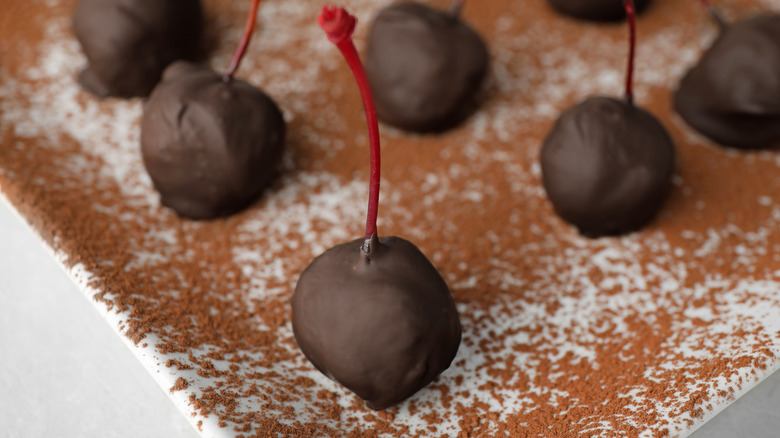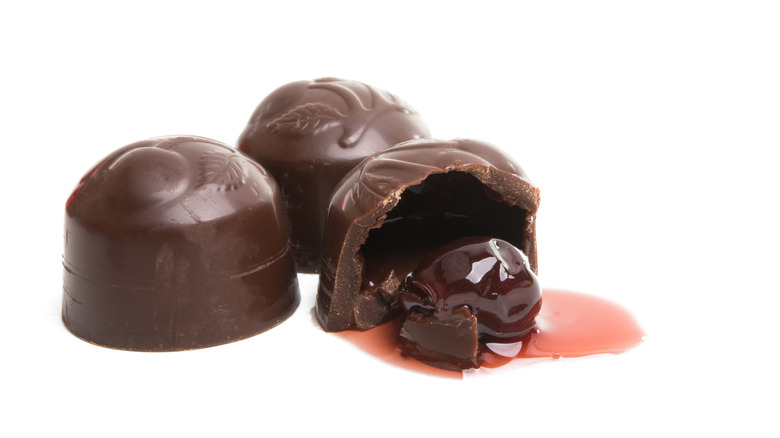The Historic Origin Of Cherry Cordials
Looking for a small sweet appetizer to put your family and friends in the celebratory spirit? Look no further than the cherry cordial. Cherries are nature's candy, so it makes sense that we've leaned into the juicy sweet characteristics of the fruit and made some truly succulent desserts. From the Maraschino cherries we like to stick in our Shirley Temples to making up Ben & Jerry's Cherry Garcia, cherries are a fantastic way to heighten any dessert experience.
That being said, the cherry cordials are a stand-alone dessert in and of themselves, even though they can easily be placed atop a bowl of ice cream or used to decorate the rim of a chocolate layer cake. These cherry cordials are cherries soaked in liquor until syrupy and then coated in tempered chocolate, which encases the boozy cherry in a smooth, hard crust (via Baking Sense). The cherry cordial still holds the shape of the cherry, stem and all, but is enriched and syrupy once you've bitten through its chocolate shell, making for a sweet bite-sized treat.
Liquor for preservation
The history of the cherry cordial goes back a lot further than you might expect. According to Ohio Liquor & Spirits, when people used to refer to a "cordial," they meant a sort of liquor. These liqueurs were often flavored with herbs or fruit — for example, cherries — and used to cure illness, help to digest a meal, or used as an aphrodisiac during the Italian renaissance.
So how did we go from liquor to a dessert when it comes to cordials? The leap isn't as far as you might think. Cherries, especially Maraschino cherries, used to be soaked and stored in maraschino liqueur to help preserve them for consumption (via What's Cooking America). At the same time as this boozy practice was in effect, the Candy Favorites reports that the French were beginning to dip their cherries into chocolate and calling them "griottes," which were the first cherry cordials. Cherries today can be stored and made into cordials without alcohol and instead use sugar syrup, but traditional cordial recipes still use real cordials to enhance the taste of their treats (via Imperial Sugar).

